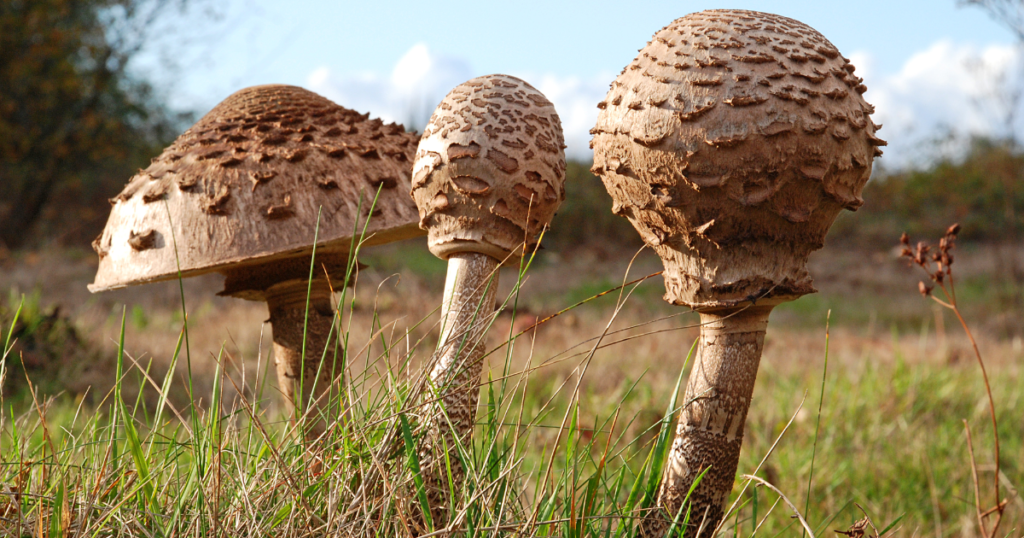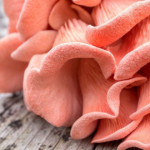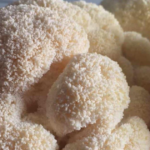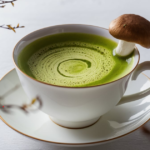Parasol mushrooms (Macrolepiota procera) are a delightful and versatile type of fungi known for their large, umbrella-like caps and delicate flavor. These mushrooms are popular among foragers and culinary enthusiasts due to their unique taste and impressive size. In this comprehensive guide, we will explore the fascinating world of parasol mushrooms, covering everything from their identification to their health benefits, and, most importantly, how to grow and harvest them.
Growing parasol mushrooms can be a rewarding hobby, offering fresh, organic produce for your kitchen. Whether you’re a seasoned gardener or a mushroom-growing novice, this guide will provide you with the knowledge and tips needed to cultivate and harvest successfully.
Understanding Parasol Mushrooms
What Are Parasol Mushrooms?
Parasol mushrooms are a species of edible fungi that belong to the family Agaricaceae. They are named for their distinctive cap, which resembles a parasol or umbrella. These mushrooms are commonly found in grassy areas, woodlands, and along forest edges.
Why Grow Parasol Mushrooms?
Growing parasol mushrooms can be a fulfilling and cost-effective way to enjoy fresh mushrooms at home. They are relatively easy to cultivate and require minimal space. Additionally, these mushrooms are a healthy and nutritious addition to your diet, offering various vitamins and minerals.
Identifying Parasol Mushrooms
Key Characteristics
To successfully grow and these mushrooms, it’s essential to correctly identify them. Here are some key characteristics:
- Cap: Large, umbrella-shaped, with a diameter of 10-30 cm.
- Gills: Free from the stem, white, and turning brown with age.
- Stem: Long, slender, and adorned with a movable ring.
- Spore Print: White.
Differentiating from Similar Species
Several mushroom species resemble parasol , making correct identification crucial. Avoid mistaking them for toxic look-alikes by focusing on these differences:
- Chlorophyllum molybdites: Often confused with parasol mushrooms but has green spore print and can cause gastrointestinal distress.
- Lepiota spp.: Smaller and more delicate, some species of Lepiota are toxic.
Growing Parasol Mushrooms
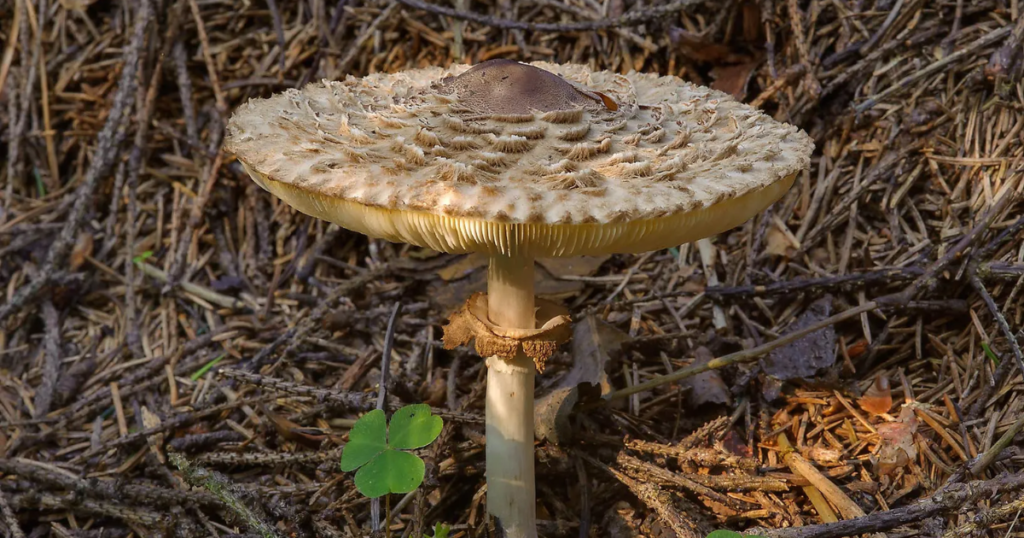
Selecting a Growing Medium
Parasol mushrooms can be grown in various mediums. Choose one that suits your environment and resources:
- Compost: A rich, nutrient-dense option for outdoor growing.
- Straw: A common medium that’s easy to source and handle.
- Wood Chips: Ideal for mimicking natural forest conditions.
Preparing the Growing Medium
Proper preparation of the growing medium is essential for successful cultivation:
- Compost: Ensure it is well-decomposed and free from contaminants.
- Straw: Pasteurize by soaking in hot water to eliminate unwanted pathogens.
- Wood Chips: Soak and partially decompose to create a suitable environment for mycelium growth.
Inoculating the Medium
Inoculating the growing medium involves introducing parasol mushroom spores or spawn:
- Spores: Available from specialty suppliers, require careful handling.
- Spawn: Easier to handle and more likely to succeed, available in grain or sawdust form.
Environmental Conditions
Ideal Conditions
Parasol mushrooms thrive in specific environmental conditions:
- Temperature: 60-75°F (15-24°C) is ideal for growth.
- Humidity: High humidity levels, around 85-95%, are necessary.
- Light: Indirect light or shaded areas work best.
Maintaining Optimal Conditions
Ensure the right conditions to promote healthy growth:
- Humidity Control: Use a humidifier or mist the growing area regularly.
- Temperature Regulation: Maintain consistent temperatures using heaters or coolers.
- Light Management: Provide filtered light or shade cloth to prevent direct sunlight.
Harvesting Parasol Mushrooms
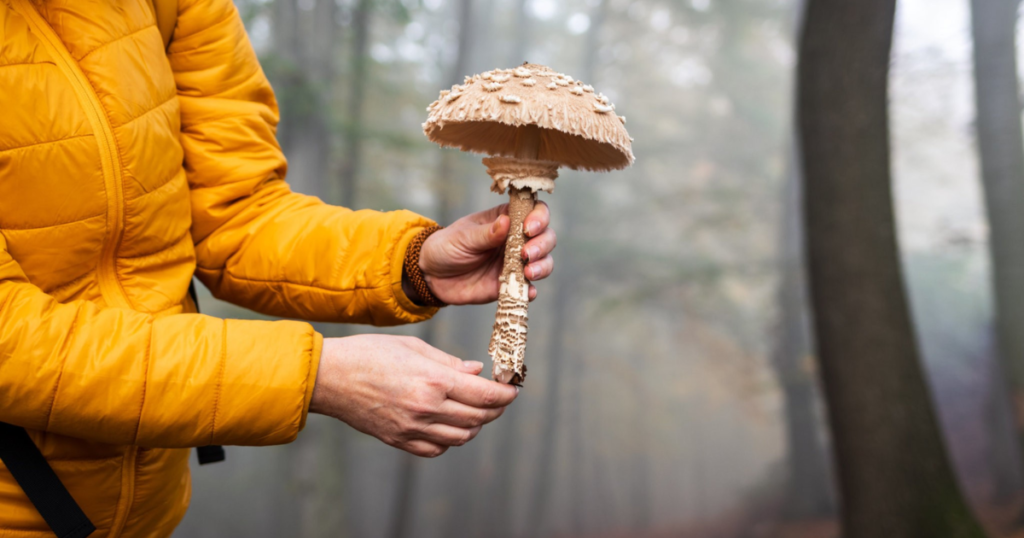
When to Harvest
Knowing when to harvest parasol mushrooms is key to enjoying their full flavor and texture:
- Size: Caps should be fully opened but not flattened.
- Color: Look for a uniform brown color without signs of decay.
- Timing: Harvest in the morning when mushrooms are most hydrated.
Harvesting Techniques
Proper techniques ensure you get the best quality mushrooms:
- Cutting: Use a sharp knife to cut the stem at the base.
- Twisting: Gently twist the mushroom to loosen it from the substrate.
Post-Harvest Handling
After harvesting, handle your parasol mushrooms with care to preserve their quality:
- Cleaning: Brush off any dirt or debris, avoid washing unless necessary.
- Storage: Store in a paper bag in the refrigerator, use within a few days.
- Preservation: Dry or freeze excess mushrooms for long-term storage.
Read More:
Common Challenges and Solutions
Pest and Disease Management
Pests and diseases can affect the growth of parasol mushrooms. Common issues include:
- Mold and Mildew: Ensure proper ventilation and humidity control to prevent fungal infections.
- Insects: Use natural repellents or barriers to protect your crop.
Troubleshooting Growth Issues
If your mushrooms aren’t growing as expected, consider these solutions:
- Slow Growth: Check for proper moisture levels and adjust as needed.
- Discoloration: Ensure the growing medium is free from contaminants.
- Deformities: Maintain consistent environmental conditions to prevent stress on the mushrooms.
Utilizing Parasol Mushrooms
Culinary Uses
Parasol mushrooms are highly versatile in the kitchen:
- Sautéed: Cook with butter, garlic, and herbs for a simple yet delicious dish.
- Stuffed: Fill with a mixture of breadcrumbs, cheese, and herbs for a savory appetizer.
- Grilled: Brush with olive oil and grill until tender for a smoky flavor.
Health Benefits
Including parasol mushrooms in your diet offers several health benefits:
- Nutrient-Rich: High in vitamins B and D, potassium, and fiber.
- Antioxidants: Contains compounds that help combat oxidative stress.
- Low-Calorie: A great addition to weight management diets due to their low-calorie content.
Table: Growing Parasol Mushrooms
| Aspect | Details |
| Growing Medium | Compost, Straw, Wood Chips |
| Inoculation Method | Spores, Spawn (Grain or Sawdust) |
| Ideal Temperature | 60-75°F (15-24°C) |
| Humidity Level | 85-95% |
| Light Requirements | Indirect light, Shaded areas |
| Harvest Time | Fully opened caps, Uniform brown color |
FAQs
How long does it take to grow parasol mushrooms?
It may be typically take 4-6 weeks to grow from inoculation to harvest.
Can I grow parasol mushrooms indoors?
Yes, you can grow them indoors using controlled environmental conditions.
Are parasol mushrooms safe to eat?
Yes, when correctly identified and prepared, parasol mushrooms are safe and delicious to eat.
How do I store harvested parasol mushrooms?
Store them in a paper bag in the refrigerator and use them within a few days.
Can I use store-bought mushrooms to start growing parasol mushrooms?
It’s best to use spores or spawn from a reputable supplier for successful cultivation.
Conclusion
Growing and harvesting parasol mushrooms can be a rewarding and enjoyable endeavor. With the right knowledge and preparation, you can cultivate these delicious mushrooms in your garden or home. From selecting the right growing medium to maintaining optimal environmental conditions, each step is crucial for success. Additionally, understanding the health benefits and culinary uses of parasol can enhance your appreciation for this unique fungi. Whether you’re a novice or an experienced grower, the tips and techniques outlined in this guide will help you achieve a bountiful harvest. Happy mushroom growing.

